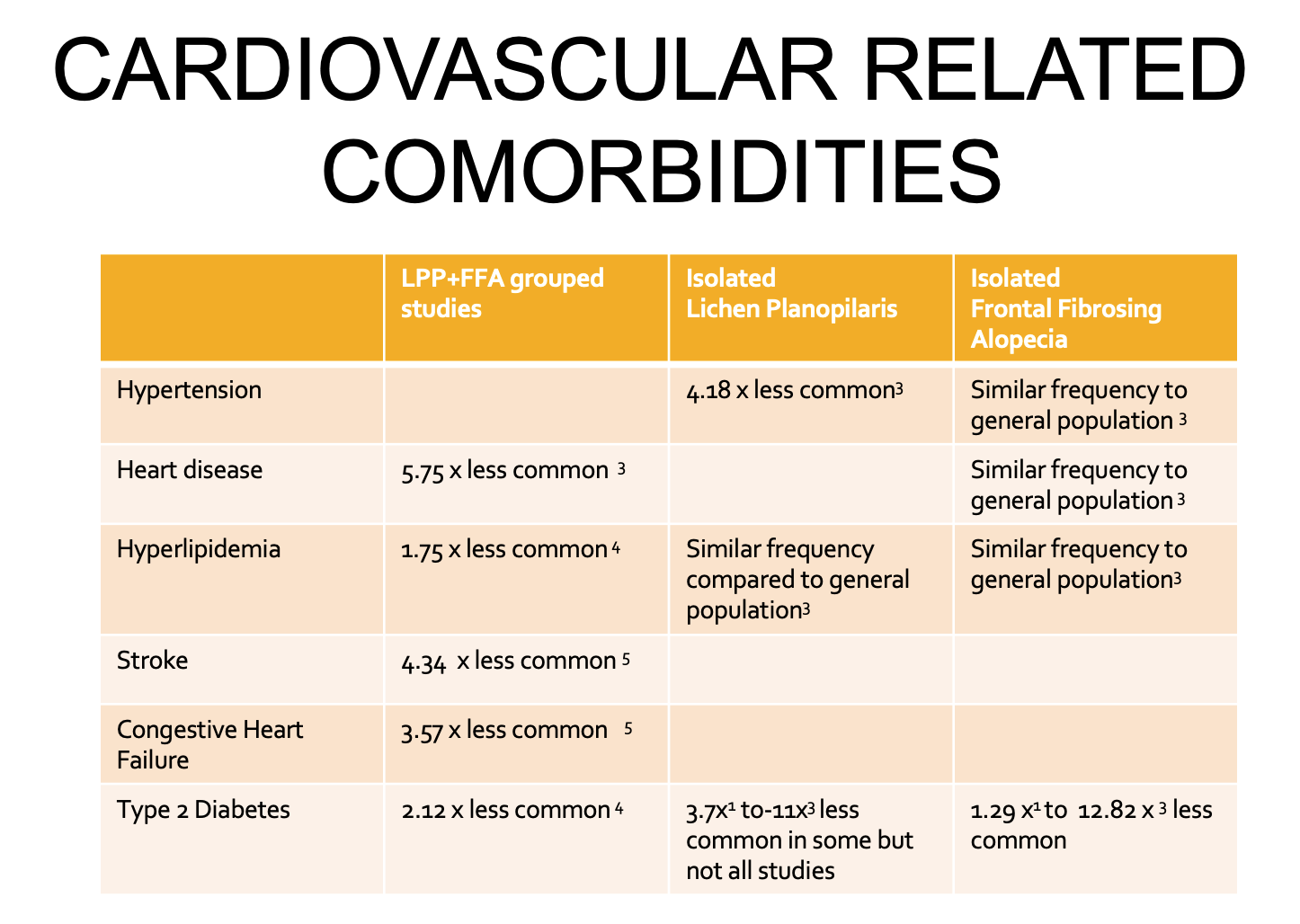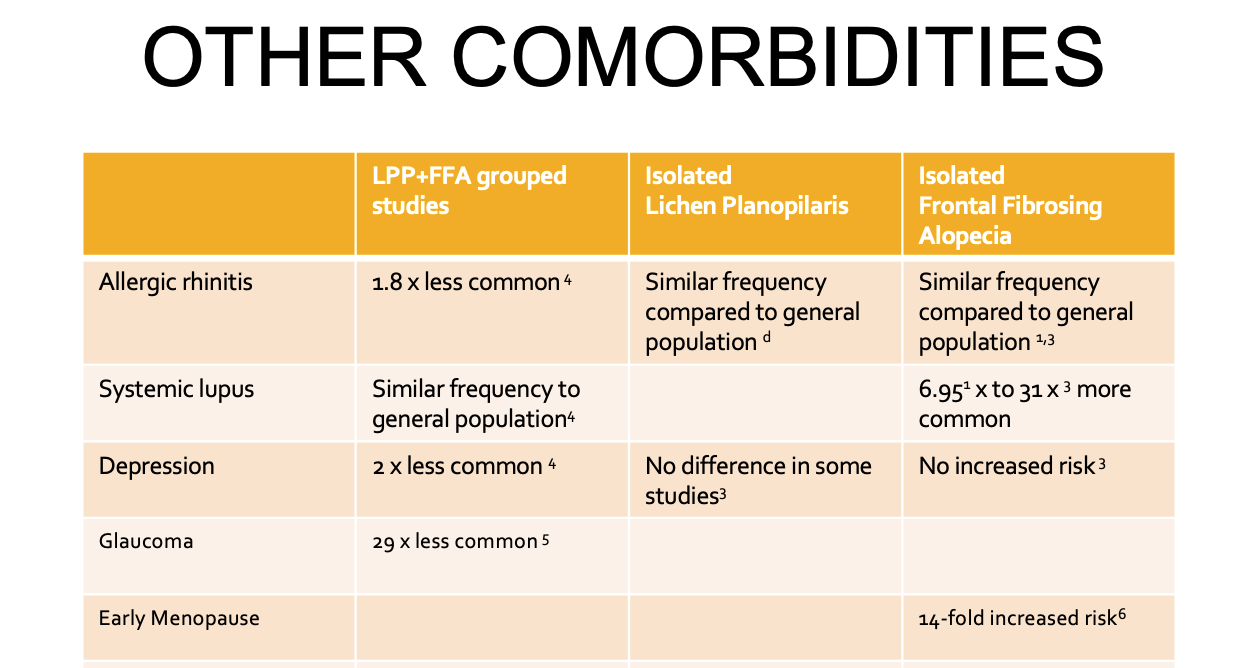The Patient with Lichen Planoplaris and/or Frontal Fibrosing Alopecia: What Underlying Conditions Might They Also Have
FFA and LPP Associated with An Array of Different Medical Conditions.
Lichen planopilaris and Frontal Fibrosing Alopecia are types of scarring alopecias and thought to have an autoimmune basis. Several studies over the years had attempted to rigorously evaluate whether patents with FFA and LPP have a truly increased risk (or decreased risk) of certain medical conditions.
There have been four terrific studies to date that have methodically compared the frequency of certain diseases to a control group. These include studies by Manatis-Lornell et al, Brankov N et al, Trager M et al and Fertig et al.
Trager M et al and Fertig et al. are really nice studies that sought to separate out patents with LPP from patients with FFA so we could get a clearer sense of what underlying diseases are uniquely associated with these conditions. The studies by Manatis-Lornell et al and Brankov et al are very nice as well and also used a control group to more rigorously look at whether some diseases in patients are increased or decreased in those with LPP. However, the LPP groups in the Manatis-Lornell et al and Brankov et al studied contained patients with both LPP and FFA so it was not possible to separate out the two diseases. In many ways, FFA is often viewed ass just a subtype of LPP so grouping them together might make sense at first glance. However, these two conditions have many unique differences and separating them out is really important in order to better understand the underlying comorbidities.
Below, I highlight some of the very important comorbidities that are proposed to exist among patients with FFA and LPP
Reference
Download Dr Donovan’s Handout “Comorbidities in LPP/FFA”
[1] Trager M et al. Medical comorbidities and sex distribution among patients with lichen planopilaris and frontal fibrosing alopecia: A retrospective cohort study. J Am Acad Dermatol. 2021 Jun;84(6):1686-1689.
[2] Moreno-Arrones et al. Risk factors associated with frontal fibrosing alopecia: a multicentre case-control study. Clin Exp Dermatol. 2019 Jun;44(4):404-410.
[3] Fertig et al. Medical comorbidities in patients with lichen planopilaris, a retrospective case-control study. Int J Dermatol. 2018 Jul;57(7):804-809.
[4] Brankov N et al. Comorbid conditions in lichen planopilaris: A retrospective data analysis of 334 patients.Brankov N, Conic RZ, Atanaskova-Mesinkovska N, Piliang M, Bergfeld WF.Int J Womens Dermatol. 2018 Jun 7;4(3):180-184.
[5] Manatis-Lornell A et al. Comorbidities in patients with lichen planopilaris: A retrospective case-control study. .J Am Acad Dermatol. 2020 Jul;83(1):205-208. doi: 10.1016/j.jaad.2019.07.018. Epub 2019 Jul 12.
[6] Van Galvan et al. Original articleFrontal fibrosing alopecia: A multicenter review of 355 patients Journal of the American Academy of Dermatology. Volume 70, Issue 4, April 2014, Pages 670-678.
This article was written by Dr. Jeff Donovan, a Canadian and US board certified dermatologist specializing exclusively in hair loss.



